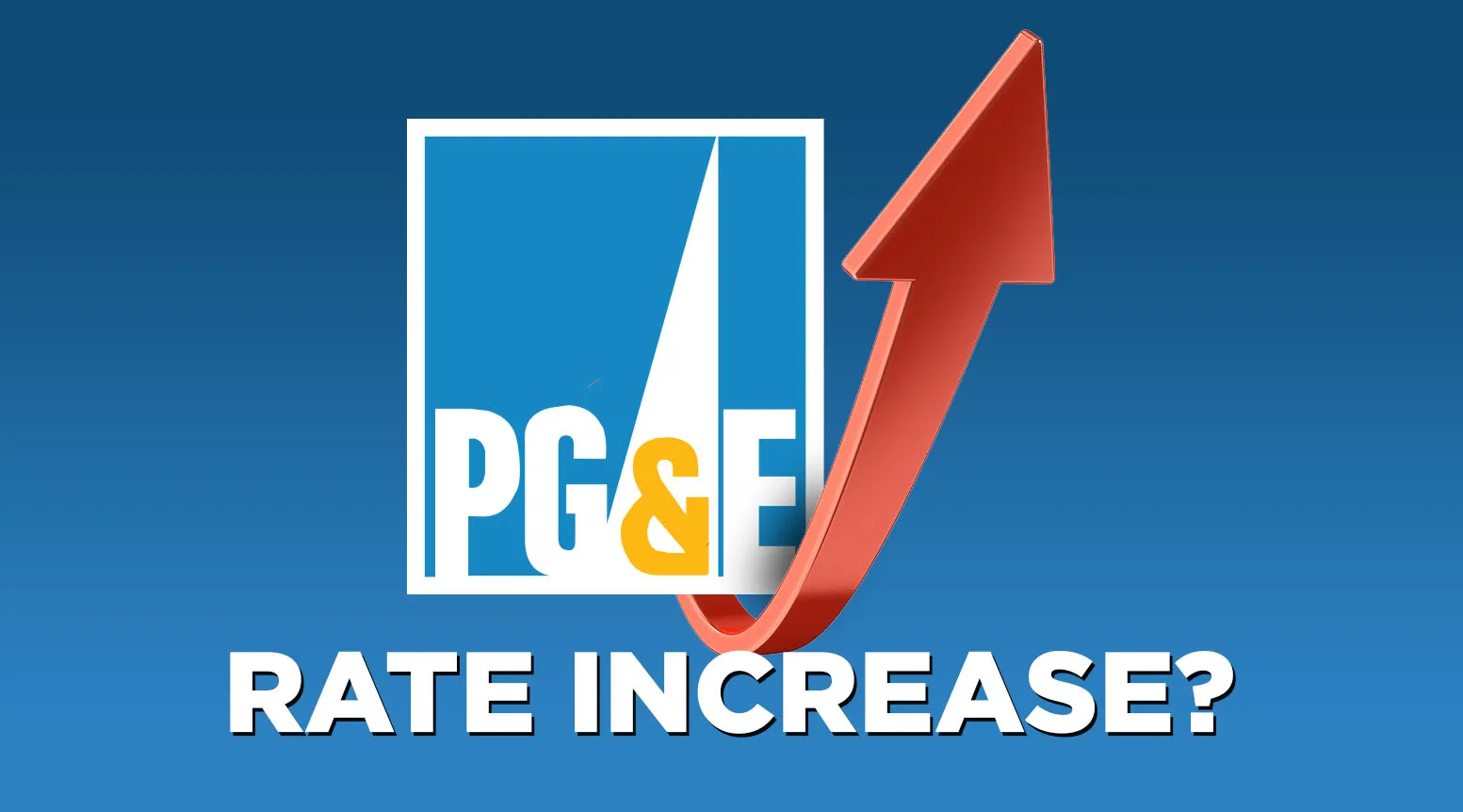California homeowners are facing rising electricity costs and a drop in the cost of solar installations. This situation presents a unique opportunity to not only reduce electricity bills but also accelerate the return on investment (ROI) for solar power systems. Let’s delve deeper into the recent PG&E price hike, its impact on solar payback period, and why solar is becoming a more attractive investment than ever before.
Understanding the PG&E Price Hike
As of January 1, 2024, Pacific Gas and Electric (PG&E) implemented a nearly 13% increase in electricity rates. This translates to an additional $34.50 per month, or roughly $400 annually, for the average California household. This price hike is attributed to factors like:
Infrastructure upgrades: PG&E is investing heavily in undergrounding power lines to mitigate wildfire risks.
Increased safety measures: These measures aim to improve the reliability and safety of the grid.
Inflation: Rising material and labor costs contribute to the overall increase.
The prospect of continuous price hikes adds another layer of concern for homeowners already grappling with rising inflation. While these increases may seem unavoidable, there’s a silver lining in the form of solar energy.
How PG&E’s Price Hike Makes Solar Even More Attractive
The good news is that the cost of solar installations has been steadily declining over the past decade. This trend, coupled with the rising PG&E rates, significantly improves the financial viability of switching to solar power. Here’s how:
1. Amplified Savings: With rising electricity costs, the amount of money saved through solar generation grows proportionally. This means your solar system will **pay for itself faster** by offsetting a larger portion of your electricity bill. The higher the PG&E rate, the greater the savings generated by your solar system.
2. Increased Energy Independence: By generating your own clean energy, you become less reliant on fluctuating market prices and future rate hikes. This provides **long-term stability and predictability to your energy costs, effectively insulating you from the financial fluctuations of the traditional grid.
3. Enhanced Property Value: Studies show that homes equipped with solar panels sell faster and at a higher price compared to similar non-solar homes. This makes solar an investment in both your energy independence and your property’s value, adding a unique selling point to your home in a competitive market.
Example:
Consider a homeowner who consumes 1,200 kWh of electricity per month at the current PG&E rate of $0.448/kWh. Their monthly electricity bill would be around $537.6.
With a typical solar system generating 600 kWh per month, the homeowner would offset half their electricity needs, resulting in a $268.8 monthly saving.
Assuming the system cost is $22,000, with current incentives and tax credits, the payback period reduces to approximately 6.5 years, compared to a previous estimate of 8 years due to lower electricity rates.
This is just an example, and individual results may vary depending on several factors, including:
Specific electricity usage: Higher electricity consumers benefit more from solar due to increased savings potential.
System size and cost: Larger, more powerful systems generate more electricity but have a higher upfront cost, impacting the payback period.
Location and sunlight availability: Areas with higher sunlight hours experience greater solar generation, leading to faster payback.
Beyond Cost Savings: The Environmental Benefits of Solar
While the financial benefits of solar are compelling, it’s important to recognize the environmental advantages:
Reduced Carbon Footprint: Solar energy production doesn’t release greenhouse gases, contributing to a cleaner and more sustainable future. By switching to solar, you actively participate in combating climate change.
Increased Energy Independence: You rely less on the traditional grid, which often relies on fossil fuels for electricity generation. This reduces your dependence on non-renewable resources and their associated environmental concerns.
Taking the Next Step Towards a Brighter Future
If you’re considering the switch to solar, here are some steps to take:
Get a free solar quote: Nabu Energy offers free consultations and quotes to assess your home’s suitability for solar and estimate the potential savings.
Research and compare: Explore different solar companies and compare their services, warranties, and financing options. Look for companies with a strong reputation for quality installations and customer service.
Understand government incentives: Federal and state tax credits, along with local and regional rebates, can significantly reduce the upfront cost of a solar system. Research available.


